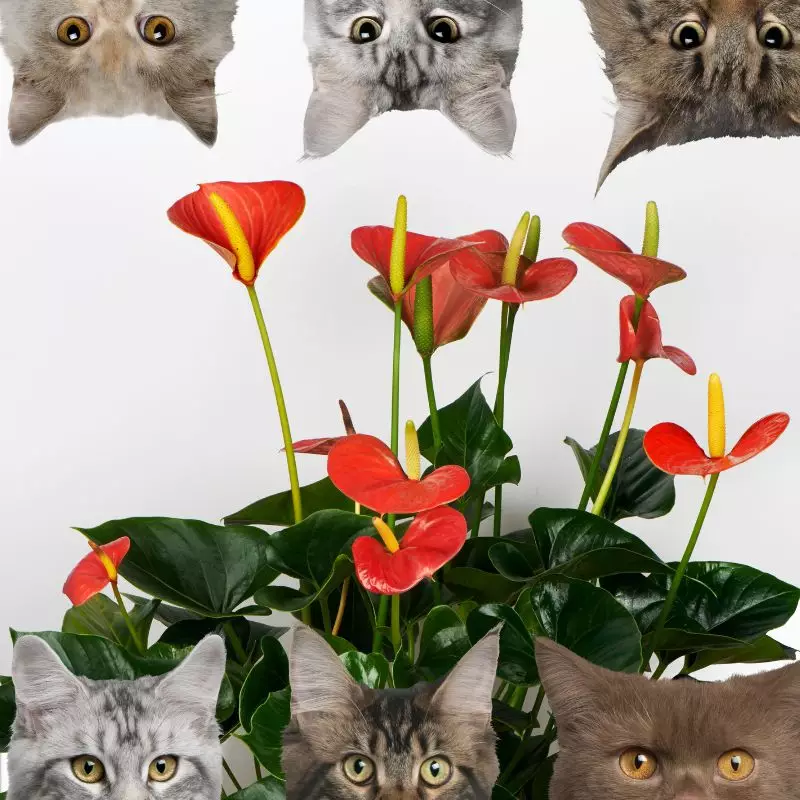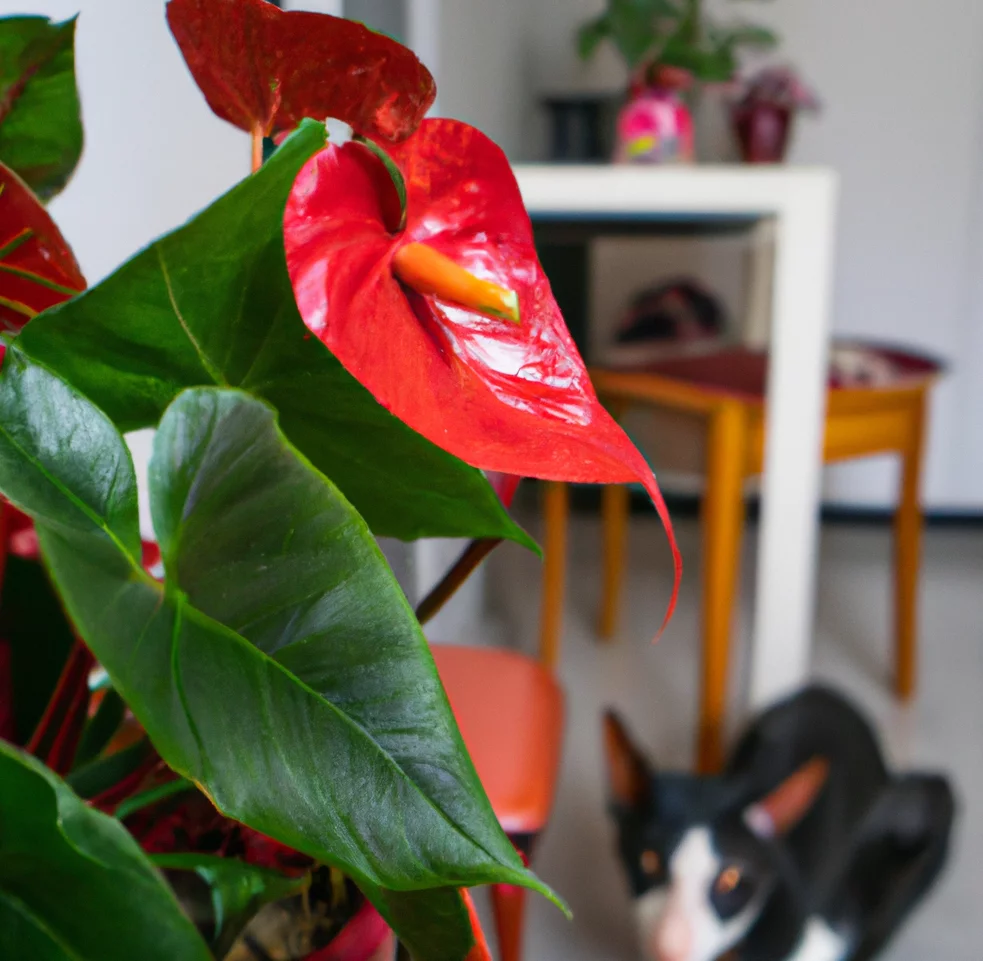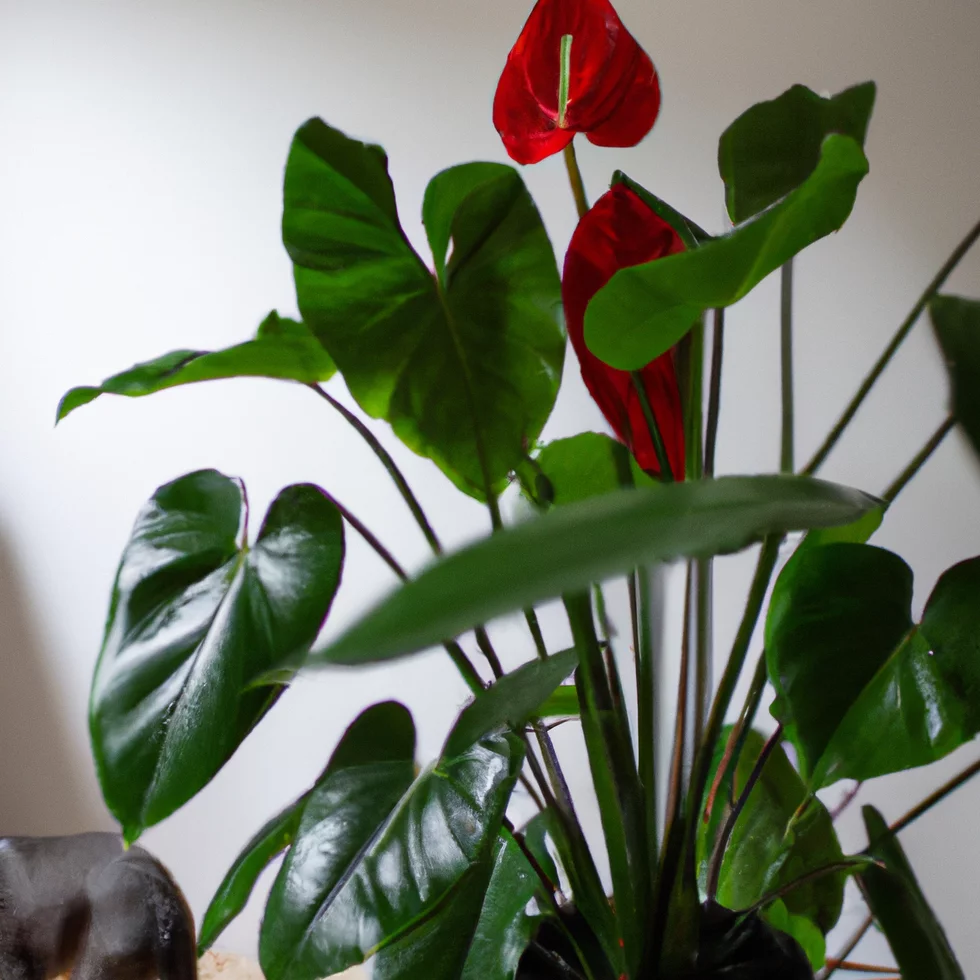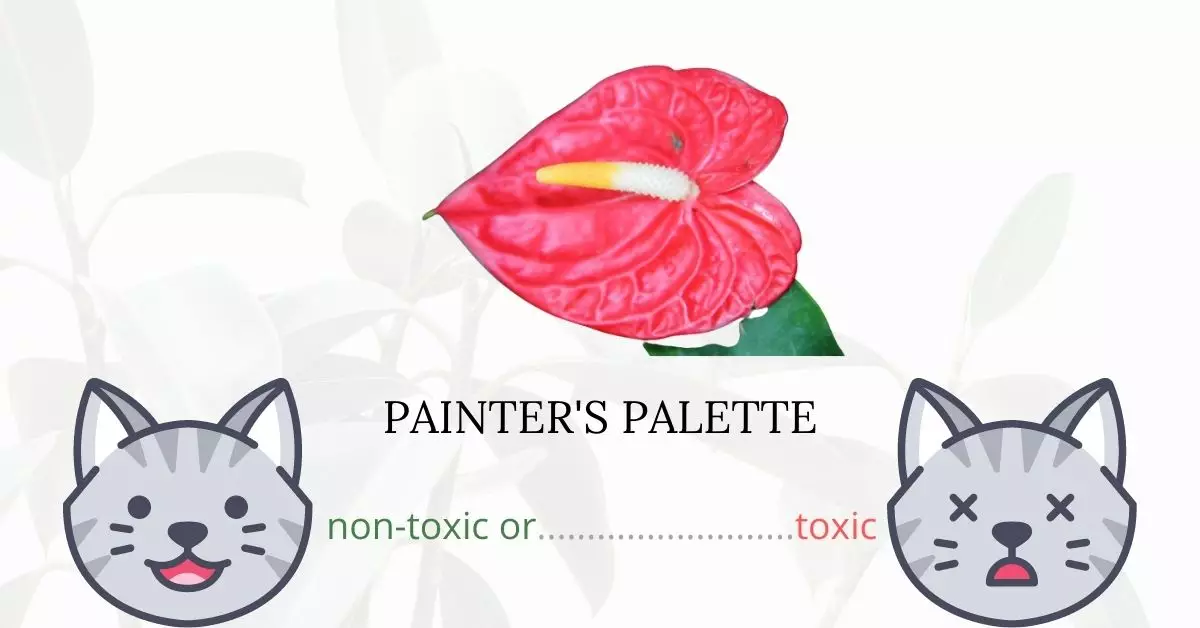Yes, Painter’s Palette—also known by other common names such as Flamingo Plant, Flamingo Lily, Tail Flower, Oilcloth Flower, Pigtail Plant, and Flamingo Flower—is toxic to cats. The primary toxin found in Painter’s Palette is calcium oxalates, which are insoluble in liquids. When ingested or when coming into contact with a cat’s face, it can cause an immediate burning sensation in their mouth, lips, and tongue.
This article has been crafted in collaboration with a team of experienced DVMs (doctors of veterinary medicine). Through their valuable insights, we aim to offer accurate and current information about the potential dangers of various plants, with a specific focus on Painter’s Palette in this context. Additionally, we have consulted high-authority websites, such as ASPCA and PetMD, to ensure that the information presented is both thorough and credible.
Clinical Signs of Painter’s Palette Poisoning in Cats

When a cat comes into contact with, smells, or consumes the Painter’s Palette plant, several clinical signs can manifest due to its toxic constituents:
- Appetite Loss: Cats may lose their appetite due to the immediate discomfort and irritation caused by the calcium oxalates in the plant.
- Vomiting & Diarrhea: The ingestion of the plant can irritate the gastrointestinal tract, leading to vomiting and diarrhea.
- Excessive Drooling: This is often a result of the immediate burning and irritating sensation induced by the plant when ingested or when the cat has merely chewed on it.
- Burning Sensation in the Mouth: Directly caused by the calcium oxalates, this sensation is a primary symptom of exposure.
- Inflammation of the Mouth: Extended contact or chewing can result in the inflammation of the cat’s oral cavity.
- Irritation and Swelling of Lips and Tongue: Physical contact with the plant’s sap or ingestion can cause localized swelling and irritation.
- Difficulty Swallowing & Choking: The inflammation and irritation can hinder the cat’s ability to swallow, potentially leading to choking.
- Blistering: Some cats may develop blisters in the mouth due to the caustic nature of the toxins present.
- Pawing at the Face: This is a cat’s instinctual reaction to discomfort or pain in the facial area, indicating that something is amiss.
- Breathing Problems: In severe cases, the swelling and inflammation can extend to the throat, causing breathing difficulties.
While rare, if a cat ingests the Painter’s Palette in large quantities, it can lead to more severe symptoms, including kidney failure. The kidney damage results from the plant’s toxins overburdening the renal system.
First Aid and Treatment of Painter’s Palette Poisoning in Cats

Remove any remaining plant in the cat’s mouth and rinse it with clean water. Feed the cat with yogurt, milk, or cheese to help the calcium precipitate and ease the oral discomfort. If symptoms are still showing, take your cat to the nearest veterinary clinic.
To relieve gastrointestinal symptoms, your cat may be given sucralfate to help reduce stomach and intestine irritation. Kapectolin, which helps coat your cat’s stomach, may also be administered. Kapectolin reacts with your cat’s stomach acids, forming a paste that acts as a barrier between its stomach and whatever remains inside.
In the case of severe vomiting and diarrhea, your veterinarian will closely monitor the cat for dehydration. Fluid therapy may be administered. If your cat’s airway becomes obstructed, he or she will have to stay at the vet’s office under observation until it can breathe normally again. Your veterinarian will also keep an eye out for signs of liver and kidney damage in your cat.
Recovery from Painter’s Palette Poisoning in Cats

After your cat has received treatment, the irritation and gastrointestinal symptoms should subside within 12 to 24 hours. Normally, your cat will fully recover if it only ate a small amount of Painter’s palette.
Prevention of Painter’s Palette Poisoning in Cats
Avoid bringing a painter’s palette into the house. Reduce your cat’s outdoor access to reduce the risk of exposure to a painter’s palette that may be growing in your neighbor’s home. Install fences and safety nets around your home to add an extra layer of security.
If you love plants but have cats at home, check out these lists:





